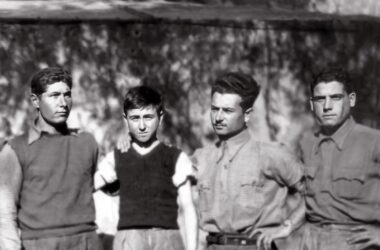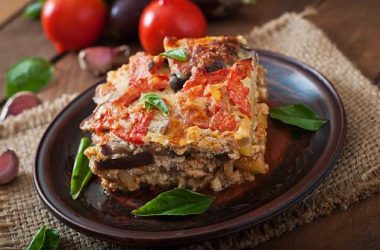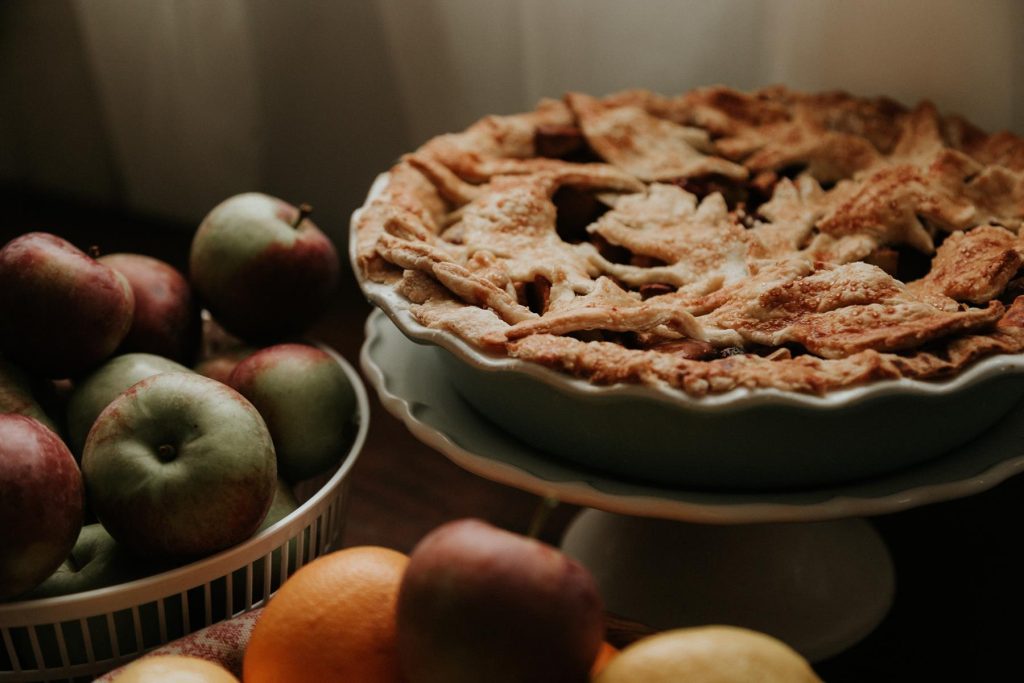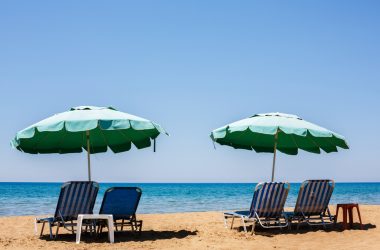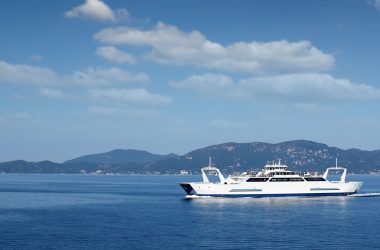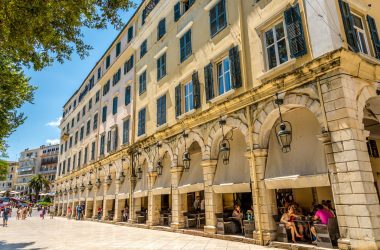Religion in Corfu



Following the official religion of mainland Greece, Corfu is predominantly Greek Orthodox. In addition to the Orthodox Church, there are also religious minorities such as Catholics, Protestants, Anglicans, and Jewish followers who regularly hold services on the island. This page introduces the main religions on Corfu Island, and provides a brief history of Saint Spyridon, the patron saint of Greece. This page also discusses Corfu churches and the religious holidays and traditions of the Corfiot people.
Saint Spyridon Church, Old Corfu Town Centre

Visitors take delight in the tallest bell tower of the old Corfu Town, St Spyridon’s church. This building can be seen all across Corfu Town, and was built in 1596. The body of the saint arrived in 1456 and remains in the church today.
St Spyridon is still carried through the streets during religious processions, and the Corfiot people greatly revere the Saint and the miracles he performed throughout his lifetime. The church was originally decorated with gold-plated wood carved by P. Doxaras, but due to the lack of proper preservation, the decorations had to be replaced. The St Spyridon Corfu church receives visitors from all over the world – especially orthodox tourists – and is located in the centre of the Corfu capital, making it an excellent stop if you’re in the old town.
Contact info for Saint Spyridon Church, Old Corfu Town centre:
Saint Spyridon church tel: +30 26610 39779 / 33059
History of Saint Spyridon

Saint Spyridon (270-348 AD) is honoured by both eastern and western Christian cultures. Saint Spyridon was born in Trimythous in Cyprus in 270 AD. As the son of a poor family, he had no formal education and earned his living as a shepherd. After the death of his beloved wife, he dedicated himself to the church, and eventually rose to be Bishop of Trimythous.
He was an integral part in the First Ecumenical Council of Nicaea (325 AD), where he countered the theological arguments of Arius and his followers. However, during the Maximilian persecutions, he was arrested and exiled. He lived the remainder of his life in Cyprus and continued to perform miracles until his death in 348 AD.
When the Saracens took over Cyprus, the Cypriots opened his grave in order to remove his sacred bones and transport them to Constantinople. As they exhumed the grave, to their surprise, they found that his body remained intact, and the scent of basil emanated from him. These were all taken as signs of proof of the sainthood he had exhibited during his lifetime.
When Constantinople fell in 1453 AD, a Corfiot elder brought Spyridon’s remains to Corfu. When the elder passed away, his three children inherited the remains. The sacred remains were passed down until they were eventually placed in a private church. The Saint was then transferred to his present church when the original church was demolished.
The locals believe that Spyridon was a holy man, and his presence still remains on the island today. It is believed that Spyridon is watching over the people, experiencing their pain, and protecting them from malady. It is believed the Saint drove away the Turks and saved the people from cholera, bringing grain for them to eat. It is because of this that offerings such as decorated slippers are made to St. Spyridon, so that he may walk beside the people as an omnipotent protector.
Spyridon’s right hand was kept in Rome for a time, however in 1986 the relic of Spyridon’s right arm was returned to Kerkyra. The relics of St Spyridon are carried in processions every Palm Sunday and on other special occasions for veneration by the faithful. All Philharmonic bands of Corfu also take part in these ceremonial events.
Saint Spyridon’s miracles

Spyridon is known as the patron saint of potters and the ‘keeper of the city of Corfu.’ The people of Corfu regard him as the cause of expelling the plague from the island, and believers say that as the plague was being expelled, it scratched one of the fortification stones of the old citadel to indicate its fury. This scratch is shown to visitors to this day.
Saint Spyridon is also attributed with converting a pagan philosopher to Christianity. He illustrated how one single piece of pottery was composed of three individual entities: fire, water and clay. This was a metaphor for the holy trinity.
A now-lost poem written by his pupil, Triphyllios, inspired two 7th-century vitae.
When is Saint Spyridon Celebrated?
Recognizing St. Spyridon’s role in the defence of the island, Venice legislated the annual “Litany of St. Spyridon” on August 11th as a commemoration of the event. His feast day is celebrated in the East on the Saturday before Great Lent (known as “Cheesefare Saturday”), and December 12th. For those Eastern Churches which follow the traditional Julian calendar, December 12th falls on December 25th of the modern Gregorian calendar. In the West he is commemorated on December 14th.
The Holy Relics of the Saint go out on parade to commemorate the occasions when he saved the island from various disasters – deliverances interpreted as miraculous interventions by the Saint. As a result, he is considered to be the island’s protector, and his miracles are celebrated with four annual processions.
Corfu Religious Ceremonies

In April, Palm Sunday is celebrated to commemorate the deliverance of the island in 1630 AD from the deadly plague. The procession sets out from the Saint’s church at 11:00 a.m. and follows the line of the old town walls, from where the Saint drove the disease out.
Also in April, Easter Sunday is marked by the presence of Saint Spyridon. The second and oldest procession was established in 1550 AD in order to commemorate relief from the feminine on the island.
On August 11th, the third procession takes place in memory of the deliverance of the island from the Turks after the month-long siege in 1716.
The first Sunday of November marks the fourth procession, and commemorates the Saint’s intervention in 1673 AD by saving the island from a plague for a second time.
OTHER CORFU CHURCHES
While there are many wonderful churches in Greece, Corfu features dozens of different styles, time periods, and saints in a relatively small area. Here are some of the best historic churches and monasteries to check out on your trip to Corfu:
- Church of Virgin Mary – this Greek orthodox church lies in the grounds of Paleokastritsa monastery, Corfu. The small monastery houses a museum with Byzantine icons as well as post-Byzantine icons. There’s also a beautiful garden with a stunning view of the sea. Check out the beach nearby – it’s one of the most beautiful beaches in Corfu.
- Latin Church of Virgin Mary of Tenedos – near the entrance to the new fortress, on Solomon Street, lies Monastery Panagia of Tenedos. It was established by refugees who fled their original monastery after the fall of Byzantium. Its unique architecture makes it one of the prettiest churches of all the Greek islands.
- The Church of Saint Jason and Sosipater – constructed around 1,000 years ago, this ancient temple is far older than the oldest churches of Corfu. Its rare Byzantine architecture makes for an astonishing site. There are frescoes from the 11-14th century AD and a beautiful bell tower that was constructed much later.
- Vlacherna Monastery – located on a small island next to the airport, this is the perfect place to visit if you want some seclusion. It’s also great for plane-watching.
- Ipapandi Church – also known as Ypapanti Church, this small church is similar to Vlacherna Monastery but less well-known. Ipapandi Church is connected to the Kommeno Peninsula by a small bridge. You can rent a car to visit here on your way to the north-east of the island.
Saint Marina Church at Benitses village
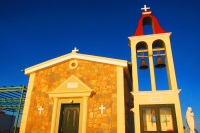
Saint Marina is the patron saint of Benitses village and regular Sunday services are held for those wishing to attend. The church of Saint Marina was built on the banks of the river which used to run through the old village. Although the river has since been diverted, the church still remains in the original location.
Additionally, annual festivals are held at the church where guests have the chance to partake in the local culture of Benitses and its patron saint. A regular Sunday service is held for patrons. For times and directions to the church, please contact the staff from Bella Vista Hotel. If you haven’t already, you can make a reservation to stay at our family-run hotel in the centre of Benitses here.
During your stay here at Bella Vista, we warmly invite you to partake in the services, or in the many festivals that take place in Benitses and around the entire island. The religious culture is not to be missed, so make a note of some of these activities to make the most of your time here. If you have any further questions regarding services, ceremonies, or religious holidays please do not hesitate to contact the staff at Bella Vista Hotel in Corfu for further information.
CATHOLICISM IN CORFU
There are a small percentage of Catholics (4%) followers whose faith is mostly attributed to geographic origins. Families from Malta, Italy, and England all have Catholic roots in Corfu. Today the Catholic community consists of about 3,500 people (mostly of Maltese descent) who live almost exclusively in Corfu Town, and live harmoniously with the Orthodox community. This group is greatly involved with philanthropic work, and is also responsible for an extremely well-run retirement home.
The Catholic Archbishopric was established in Corfu in 1310 AD by Charles of Anjou, and has maintained a constant presence on the island ever since. The Catholic Church of Saint James and Saint Christopher is the only Catholic cathedral of Corfu island.
JUDAISM IN CORFU
The first written testimony of the presence of Jews in Corfu was found in the “Itinerary” of the Spanish Rabbi Benjamin Ben Yonah, who wrote that during his visit to the island in the 12th century, he met a Jewish dyer named Joseph. Later on, historians noted that in 1267 “numerous Jews lived on the island”.
Following a rather tumultuous history, the Jewish people of Corfu built the Scuola Greca Synagogue during the 17th century in the Venetian architectural style. It is the only synagogue remaining on the island of Corfu today. There were three that existed before World War II. It is maintained by the small Jewish Community of Corfu, and is in relatively good condition.
The Jewish Cemetery of Corfu contains tombstones of historical interest. The new cemetery is located in the area called “Cephalomandouko” next to the Catholic cemetery. It has to be noted that maintenance began in 2002 and the preservation works have been included in the list of Corfu’s actions in the UNESCO effort.
THE BRITISH CEMETERY
The island of Corfu was used during the First World War as a British and United States naval base. The Corfu British Cemetery was opened around 1814, and contains some World War I burials, along with others. The cemetery is located to the south of the Old Town on Alexandras Avenue and the property is surrounded by splendid gardens.
